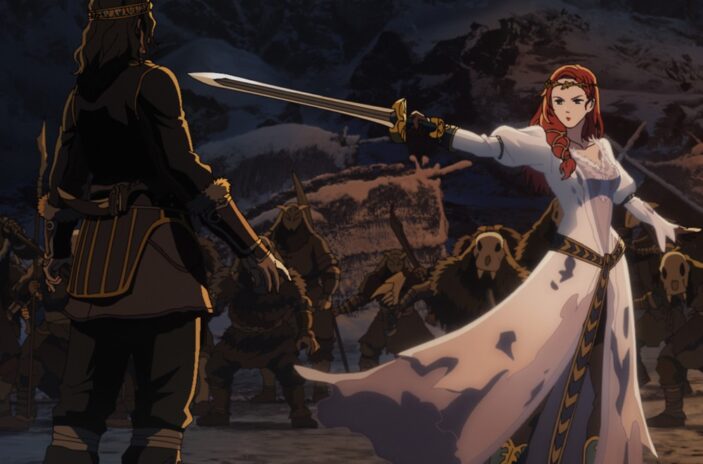
It goes without saying that The Lord of the Rings film trilogy is one that left an impressionable in-print on cinema. Many other films have tried their best to emulate its epic nature in the years since – even director Peter Jackson himself with the shaky Hobbit series – but few have captured correctly, so there’s perhaps a sense of expectation (or is that pressure?) with The Lord of the Rings: The War of the Rohirrim, an animated journey that pre-dates both the original trilogy and the Hobbit films.
Wisely giving itself its own identity by not just animating Jackson’s take on J. R. R. Tolkien‘s material by implementing the anime style of director Kenji Kamiyama, Rohirrim certainly evokes the same sense of wonder the original films did. Whether it’ll hold as prominently in its longevity is another question though, with its elements of blatant fan service threatening to undo the personality it forges on its own accord.
Set 183 years prior to the events of The Lord of the Rings trilogy, Rohirrim bases itself around the king of Rohan, Helm Hammerhand (voiced by Brian Cox), a hot-tempered royal, who starts a war within when he slays Freca (Shaun Dooley), a Dunlending lord, who attempted to take the throne for himself. Vowing to avenge his father, Wulf (Luke Pasqualino), a ruthless leader in his own right, is consumed by his bloodlust to destroy Helm and his people, leaving it to Helm’s rebellious daughter, Héra (Gaia Wise), to emerge as Middle Earth’s protector.
Whilst there are certain references throughout Rohirrim that will benefit those that are familiar with The Lord of the Rings as a whole, the Jeffrey Addiss–Will Matthews–Phoebe Gittins–Arty Papageorgiou-penned script does serve as its own beast in many ways, with the storyline detaching itself from the wider narrative. As grand as everything is, it’s a smaller film that gets to tell its own tale in an expansive universe, and both fans and the uninitiated likely to enjoy the story on its own merits. The nods to the original material – which will only be really noticed by the familiar – don’t always blend organically, but their inclusion isn’t enough to take away from the film’s individuality; not at fault in any manner though is the inclusion of Miranda Otto as Éowyn, a noblewoman prominent in Jackson’s films, whose soothing vocals narrate the feature here.
Given that The Lord of the Rings is known for such intricate world building, and had three films to entirely flesh out its story, some of Rohirrim‘s pacing may test audiences. It feels as if it’s deliberately taking its time throughout, but then, as if almost realising it doesn’t have the benefit of immediate future stories, hurries itself with a dump of exposition. That being said, it was never something that irked me specifically as, and I’m aware this statement may be blasphemous to many, Jackson’s trilogy is not one that I worship the ground of. By no means do I discredit their worth or value as absolute behemoths of filmmaking at their most epic, but there were moments that their extended nature didn’t feel entirely necessary, and, admittedly, a Lord of the Rings story like Rohirrim, that fleshes out its characters, provides welcome action and spectacle, and doesn’t linger with the sense of a knowing immediate sequel, felt perfectly satisfactory.
Undeniably beautiful regardless of how you view it, The Lord of the Rings: The War of the Rohirrim is likely to be a more winning tale for those that can separate it from the original material. It ties in well to what has cinematically come (and will narratively follow), but when it forges its own path it does feel like a more confident telling. Kamiyama’s aesthetic strokes are impossibly stunning though, and, if nothing else, a journey to the cinema is worth it for the visual enchantment alone.
![]()
![]()
![]()
![]()
![]()
THREE AND A HALF STARS (OUT OF FIVE)
The Lord of the Rings: The War of the Rohirrim is screening in Australian theatres from December 12th, 2024.
